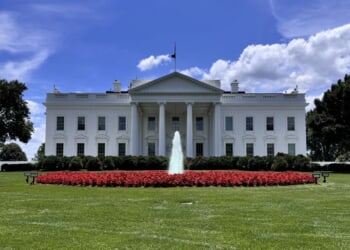Based on the design of the F/A-18 Hornet, the EA-18G Growler is one of the best aircraft for its particular mission set in the world.
As technology continues to advance and the world becomes increasingly more digitized, electronic warfare is all the more important. The U.S. Navy understands this—and continues to drill its electronic warfare squadrons to be ready for a future conflict.
As part of these preparations, the U.S. Navy’s Expeditionary Electronic Attack Squadron (VAQ) 131 joined the Japanese Navy in a large-scale exercise near Okinawa.
The Navy’s E/A-18G Growlers in Action on Okinawa
“This exercise enhances our combined capability to build, share, and protect battlespace awareness, tying together data from both the air and the sea,” Navy Commander James Jordan, the commanding officer of VAQ-131, stated about his unit’s participation in the exercise.
The Electronic Attack Squadron (VAQ) 131 operates EA-18G Growler electronic warfare fighter jets. Based on the design of the F/A-18 Hornet, the EA-18G Growler is one of the best aircraft for its particular mission set in the world.
“In a crisis, it will be crucial for us to be able to integrate seamlessly with our Japanese allies in the electronic warfare arena,” Jordan said. “As we continue to grow these relationships under the FUJIN memorandum, we’re improving those ties with our allied forces.”
In addition to the EA-18G Growler, the U.S. Navy has the F-35C Lightning II, which is also capable of conducting electronic warfare. Both aircraft are designed to operate from aircraft carriers.
“This exercise is precisely the tactical integration Vice Adm. Kaneshima [the senior Japanese officer participating in the exercise] and I envisioned when we signed this memorandum,” U.S. Navy Rear Adm. Greg Newkirk, commander of Task Force (CTF) 70. “Our naval air forces are making deep inroads in all-spectrum interoperability, taking a strong unified team and becoming stronger. This training is just one of what will be many tangible outcomes of our Fujin pact.”
Electronic Attack Squadron (VAQ) 131 is based in Japan, and it has aircraft at Misawa Air Base and Kadena Air Base.
Why the U.S. Air Force Needs Electronic Warfare Readiness
Electronic warfare is one of the most important skill sets in today’s combat environment. As militaries are becoming increasingly digitized, the ability to control and shape the electromagnetic spectrum can tilt the scale of combat in one’s favor.
In an air power setting, electronic warfare aircraft like the EA-18G Growler are designed to track and suppress enemy radar and other early-warning sensors in order to pave the way for follow-on forces. Paired with the AGM-88 High Speed Anti-Radiation Missile (HARM), an EA-18G Growler can destroy enemy systems from afar, enabling other aircraft and assets to achieve their missions.
In a potential conflict with China in the Indo-Pacific, the Navy’s electronic warfare aircraft will play a pivotal role in allowing the U.S. military to establish its cadence of operations. They will also play an important role in countering the Chinese military’s Anti-Access, Aerial Denial (A2/AD) umbrella around Taiwan and the South China Sea. Comprising anti-ship and anti-air systems and radars, Beijing’s A2/AD umbrella could restrict the Navy’s aircraft carriers from operating to their full power if it is not suppressed effectively—a task the Growler fleet is preparing for around the clock.
About the Author: Stavros Atlamazoglou
Stavros Atlamazoglou is a seasoned defense journalist specializing in special operations and a Hellenic Army veteran (national service with the 575th Marine Battalion and Army HQ). He holds a BA from the Johns Hopkins University and an MA from the Johns Hopkins’ School of Advanced International Studies (SAIS). His work has been featured in Business Insider, Sandboxx, and SOFREP.
Image: Shutterstock / Grapsole79.

















